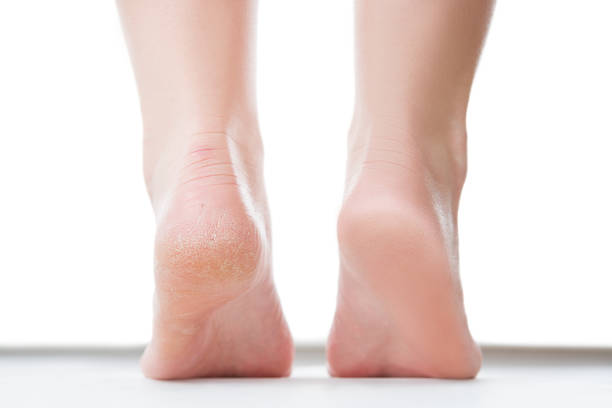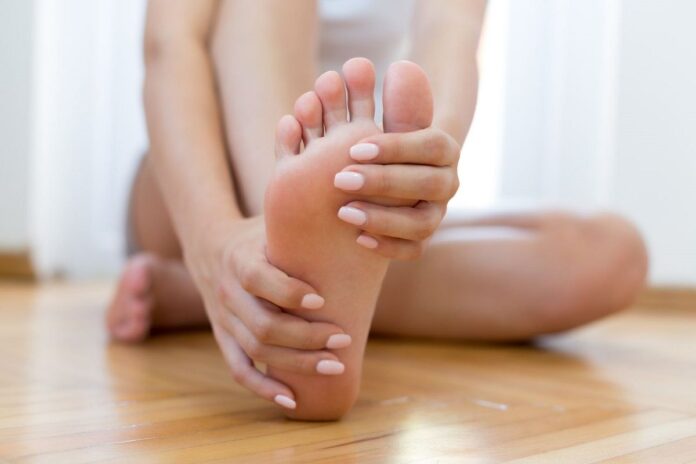Corns and calluses are among the most frequent skin conditions and can be a source of disability, discomfort, and pain.
In reaction to extreme pressure and chafing, the skin develops thick, hard growths called corns and calluses. Typically seen on the toes, corns are skin thickenings that resemble a little bump with a hard centre and are surrounded by an itchy region. Corns frequently cause discomfort.
Calluses are thickened pads of skin, usually on weight-bearing portions of the sole. They also can develop on the hands in response to excessive pressure and friction. Calluses are not usually painful.
Table of Contents
What causes corns and calluses?

Corns can be either soft or hard, but hard corns are more common. A hard corn, which often develops on the toe joint, is generally caused by pressure from ill-fitting shoes. These corns tend to be more firm and flesh-colored than soft corns. Soft corns are generally caused by excessive moisture between toes or from pressure of toes rubbing against each other. Soft corns tend to be more white in appearance.
Calluses are caused by rubbing or friction against the skin, also typically from ill-fitting shoes. They will first lead to blisters, but if left untreated can cause the skin to thicken into a callus. Calluses also develop on hands from the pressure of repetitive motion.
Common activities that cause corns and calluses include wearing shoes that do not fit properly or wearing shoes without socks, walking around barefoot, or frequently using tools such as hammers or gardening tools that rub against the skin.
What if you do nothing?
Corns and calluses are minor inconveniences and need no special care. (However, if you have diabetes mellitus, also known as type 2 diabetes, special care must be taken because of the possibility of infection.) Once the cause is eliminated, corns and calluses generally go away within four weeks.
Home remedies for corns and calluses
- Soak. The best way to treat corns and calluses at home is to soak the foot in warm (never hot) water until the hardened skin softens, then gently apply a pumice stone or callus file. Don’t rub the area raw. It may take several treatments.
- Moisturize. Apply a moisturizer to the affected area to help keep the skin soft.
- Protect the area. Use a light pad or bandage. Moleskin comes with adhesive and can be trimmed to fit the spot and relieve pressure.
- Remove the corn or callus. Corns and calluses are treated the same way. Many over-the-counter plasters are available, most containing salicylic acid. Use caution when applying these products, though, as they can irritate the surrounding healthy skin. If you have diabetes, you should not use these plasters without first consulting your doctor and discussing whether this might be an appropriate option for you.
How to prevent corns and calluses
- Make sure shoes fit properly. Have your feet accurately measured by an experienced shoe salesperson. Shoes should be wide enough and sufficiently cushioned to protect the feet.
- Avoid extended high-heel use. These shoes put pressure on the toes and can lead to corns.
- Avoid going barefoot and wear socks with shoes. This will prevent excess friction and pressure against bare skin and will help to protect your feet.
- Use special pads inside shoes. You may find that the use of pads inside your shoes will help to prevent unnecessary rubbing.
- Wear appropriate gloves. Gloves will protect your hands during gardening or other activities.
When to call your doctor about corns or calluses
Contact your doctor if a corn or callus becomes infected or inflamed, or if home remedies do not resolve corns or calluses within one to two weeks.
What your doctor will do
After a close examination your doctor or podiatrist may remove the callus or corn with a scalpel. In some cases an orthotic—a special shoe insert—may be recommended to correct abnormal foot mechanics that are causing the problem. Your doctor or podiatrist may also apply a medicated patch to help remove the callus.




